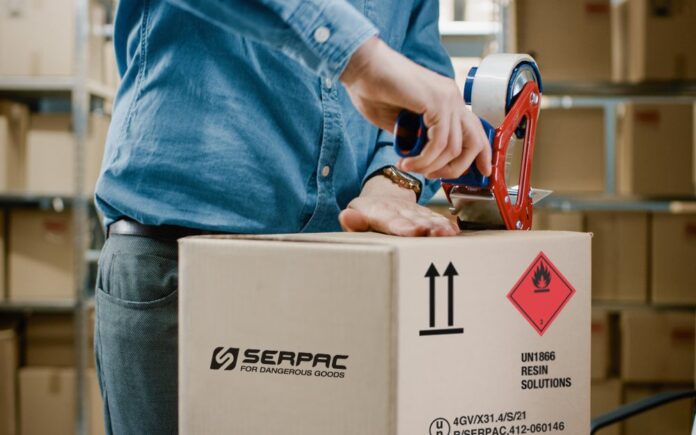When it comes to shipping dangerous goods, safety is paramount. Among the various packaging options available, the UN 4G box stands out as a versatile and reliable choice. But when exactly should you use a UN 4G box for dangerous goods? Understanding the specifics can help ensure that your shipments are both safe and compliant with international regulations.
What Is a UN 4G Box?
A UN 4G box is a type of packaging specifically designed and tested to meet the stringent standards set by the United Nations (UN) for transporting hazardous materials. These boxes are often used as outer packaging for inner containers holding dangerous goods, providing an additional layer of protection.
The “4G” designation refers to a specific standard within the UN regulations that govern the testing and certification of these boxes, ensuring they can withstand the rigours of transportation without compromising the safety of the contents or those handling the shipment.
When Should You Use a UN 4G Box?
There are several scenarios where using a UN 4G box is not just recommended but required:
Shipping Hazardous Liquids and Solids
One of the primary uses for UN 4G boxes is in the shipment of hazardous liquids and solids. These boxes are often used as the outer packaging for inner containers, such as bottles, cans, or jars, that hold dangerous goods.
Why It’s Important:
- Containment: The UN 4G box provides an additional layer of containment, reducing the risk of leaks or spills during transit.
- Regulatory Compliance: Many regulatory bodies, including the International Air Transport Association (IATA) and the International Maritime Organization (IMO), require the use of UN 4G boxes for certain classes of dangerous goods.
Transporting Mixed Hazard Classes
If you’re transporting a combination of different hazardous materials, a UN 4G box is often the go-to solution.
These boxes are designed to handle various classes of dangerous goods, making them ideal for shipments involving mixed contents.
Why It’s Important:
- Versatility: UN 4G boxes can accommodate multiple inner containers, each holding different types of hazardous materials.
- Safety: The robust construction of these boxes ensures that even if one container fails, the outer packaging will help prevent the spread of the hazardous substance.
International Shipments
When shipping dangerous goods internationally, compliance with global standards is a must. UN 4G boxes are universally recognised and accepted, making them the preferred choice for cross-border shipments.
Why It’s Important:
- Global Acceptance: Because UN 4G boxes meet international standards, they are accepted by regulatory agencies worldwide, ensuring that your shipment isn’t delayed or rejected at customs.
- Durability: International shipments often involve multiple modes of transport, including air, sea, and land. UN 4G boxes are designed to withstand the rigours of these various transportation methods.
Shipping Limited Quantities of Dangerous Goods
In cases where you’re shipping limited quantities of dangerous goods, a UN 4G box might be required to ensure the safe transport of these materials. This is particularly true when the goods are still hazardous but are being shipped in smaller amounts that fall under “limited quantity” exemptions.
Why It’s Important:
- Protection: Even in limited quantities, dangerous goods can pose significant risks. A UN 4G box provides the necessary protection to minimise these risks.
- Compliance: Certain regulations may still require the use of UN-certified packaging for limited quantities, depending on the nature of the material and the mode of transport.
Custom Packaging Requirements
Sometimes, a specific hazardous material may require custom packaging solutions to ensure safe transport. In these instances, a UN 4G box is often customised to meet the unique needs of the shipment, providing a tailored solution that maintains compliance and safety.
Why It’s Important:
- Tailored Protection: Customised UN 4G boxes can be designed to fit unusual or oversized inner containers, ensuring that the outer packaging provides adequate protection.
- Meeting Specific Regulations: Custom solutions often need to meet particular regulatory requirements, and a certified UN 4G box can be modified to ensure full compliance.
Conclusion
The decision to use a UN 4G box for dangerous goods isn’t just about choosing the right packaging—it’s about ensuring the safety of everyone involved in the transportation process, from the initial packers to the final recipients.
When in doubt, always consult the relevant regulations and, if necessary, seek advice from a packaging expert to ensure that your dangerous goods are packaged correctly. The right packaging can make all the difference in protecting not only your goods but also the people who handle them and the environment.




